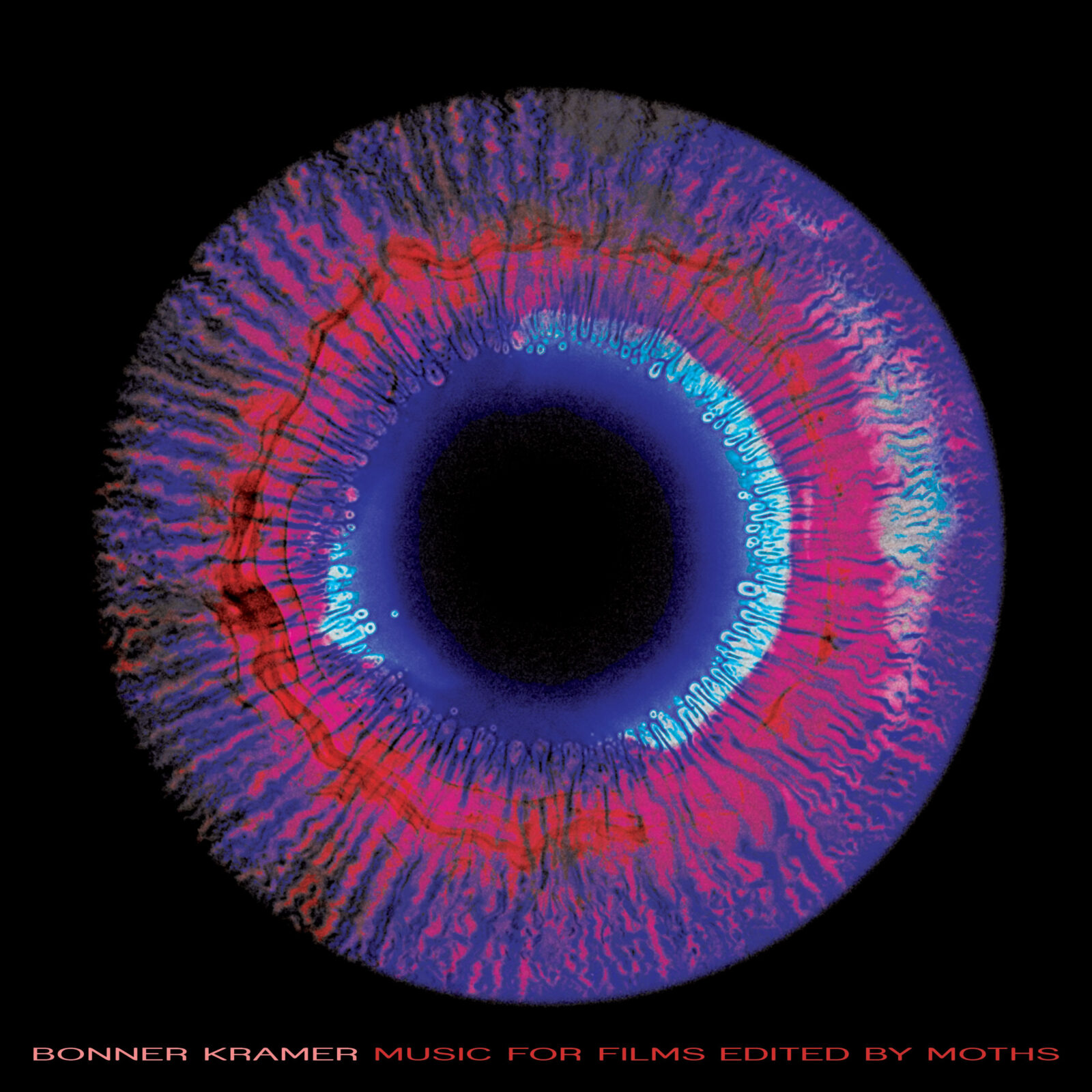‘Like the Planets Love the Sun’ by Kramer | Interview | New Album, ‘Music For Films Edited By Moths’
Today, Kramer announces a brand new LP, ‘Music for Films Edited by Moths’, out August 26 via Shimmy-Disc/Joyful Noise Recordings. Alongside the announcement, he has shared the record’s first single, ‘Like the Planets Love the Sun’, alongside an accompanying video.
With the track’s visual interpretation, multi-media artist Tinca Veerman creates an impressionistic tableau for Kramer’s planetary wanderings, incorporating depth-of-field perception techniques that force the eye to focus upon what is central to the core of the sound-image events, drawing the listener into the light.

Speaking on his forthcoming LP, Kramer wrote: “What I have come to embrace is the working notion that there is no Past, and no Future. There is only a constantly evolving series of microscopic moments that constitute the miraculous Present. As fertile as it is and always has been, for me, Memory is a chimera. So if you asked me what it is exactly that I am trying to do now, with Music, be it through song, or through ambience, I would confess that what I’m doing couldn’t be more simple; I am just trying to explain myself. I’m trying to show you who I am”.
In the ten compositions that comprise this new LP, mournful at times yet mysteriously life-affirming and generous in their scope, Kramer sees films where there are none, and composes his accompanying ambient soundtracks in a state of interrupted grace. Words, text, complete screenplays, character arcs, shooting scripts and storyboards swirl through his head as he puts his imagery to sound, and the results evoke a world in which moths, drawn to the bright flickering lights of Cinema and the low humming lights of Dreams, in Kramer’s own words, “…might never die”.
Though often evocative of dreams, there is nothing even remotely somnambulant about this new work. It bears witness to a frenetic intelligence that asks for the listener’s full and waking participation. Intensely passive yet electrically charged, the music comes before the film, as the film becomes the music.
The LP’s nature reveals an interior dialogue between musician and choice. Each piece represents Kramer’s encounter with the blank canvas of silence that greets him as a composer. Embracing sounds as objects and instruments of Truth, the end result of his process is as much about what is absent and what has been removed or edited away than what is left in its wake as artifacts of emotion. These pieces are the Spring frost of lost imaginings, vanitas to broken connections, visions nearly unrecordable by the human eye. Kramer envisions a music that functions to stop time, as an event that always plays in the present and never needs a past to give it a reference point. It is music that communicates in the most intimate way possible, as intricately and as deeply as the way it blossoms and shifts and evades categorization when exposed to thin air.
Drawn toward the light of a multitude of influences, we hear echoes of the feverishly frozen dreams of composers Morton Feldman, Terry Riley, Brian Eno and Arvo Part, melting alongside the surreal cinemas of David Lynch and The Brothers Quay, all parts converging to evoke a time and place that does not exist outside of the mind’s eye of the listener. These ten works are fluid adventures in fathomless landscapes, emotions distilled and offered as a painterless canvas without a physical home. Each individual composition is an offering to a future memory, a chalice to be filled with the listener’s own reactions to them. As a whole, the ten pieces form an image of ten circling planets in an expanding galaxy that colors itself anew with each subsequent listen. Movement, grace, and Peace.
After making much of his career within the practically anonymous labors of an independent record producer – one that embroiders the labors of others to be seen in their finest light, without shedding originality for a brand or to be enhanced with jarring, trend-setting effects recycled for commerce and profits – Kramer’s collaborations strive to give a purer vision to Art and a confidence in wandering without boundaries through each artist’s ever-evolving intuitive processes. He regards the undiscovered oceans of creative possibilities without judgements or fears. For him, the act of making Art is the act of fearing nothing.
Composing these works for films that do not exist, Kramer collaborates on the video art for this project with Dutch Multi-Media artist Tinca Veerman, who crafts a uniquely idiosyncratic and profoundly sensual visual world for Kramer’s visceral imagination. Veerman’s stunning creations for the human eye are a perfect compliment for Kramer’s audio love letters for the human soul.
As a solo artist, Kramer has always worked with his own unique vocabulary. He is a sound-poet; a restless interpreter of his own imagination and emotions using the experience of his works to invite stillness, openness, Truth, and a selfless surrender to the infinite possibilities that manifest themselves by the simple yet sometimes radical act of Listening.
What’s the concept behind your latest album, ‘Music For Films Edited By Moths’?
Kramer: Other than to create a soundtrack for a film that only exists in my head, there really was no concept. Not when I began working on it, anyway. Metaphors, shapes, characters, scene structure, story arcs…all these things come to me as the work progresses. I don’t map things out in advance. I let the maps draw themselves. Then I put my shoes on and start walking, in the moment. I know that’s an overused cliché nowadays, but it accurately describes the immediacy of my creative process. I have no idea how to look at the sea, until I’m on the beach. And I’m very patient. It’ll still be there tomorrow, if I don’t make it there today.

Today we are premiering the first single ‘Like the Planets Love the Sun’, would you like to share some further words on how you work on it as it’s a truly haunting piece of instrumental.
I begin simply by sitting down and creating a beginning. The rest of the work follows like a shadow. I don’t see it in front of me, but I know it’s there, right behind me, and I’m confident that if I turn around, I’ll see it. And when I do see it, I know the piece is done. John Cage once said, “The most important thing about any sound is how it begins, and how it ends”. Each time I compose a song, or a prelude, or a hymn, or a celebration of “ambience”, as with this LP, I have that thought in mind.
There seems to be a storyline that follows us across the album. The result is a very complex album. Was it difficult to get all the material together?
Not at all. The process I’ve described repeated itself daily over the course of ten consecutive days, resulting in the ten compositions on the LP. Shadows, light, moths and the manner in which they live and die, and the manner in which sound and cinema intoxicates the listener, and the viewer, when it’s successful. What draws a moth to the light? No one knows for certain, but I have some ideas…
How was it to work with Tinca Veerman on the ‘Like the Planets Love the Sun’ visuals?
Tinca is a visual artist whose aesthetics are very close to mine. She will lay out a series of ideas, and then stare into them until one of them sings to her. Then she simply follows the song. I compose in the same way. I never “try”. I simply let it happen. It’s a process that begins and ends with the act of listening. And if I listen honestly, the results are honest, from the heart, and imbued with an indescribable Truth. I firmly believe that the listener can hear that, and that is the presumption under which I continue to find peace, and perhaps even solace, in my work. It’s in the giving, that I find a way…
You’re also very busy with label work and so on. What are some of the latest projects you would like to mention to our readers?
In February I produced an LP for Eerie Wanda that I’m incredibly happy with. I can’t recall the last time I was so happy with a collaboration. She is an extraordinary artist with an entire galaxy of miracles in her future. I’m currently about to begin work on a collaborative LP with Pan American (aka; Mark Nelson), and I’m producing an LP for Tall Tall Trees & J.D. Pinkus in a few weeks; two psychedelic banjos making madness together. That should be fun. And actually, these questions I’m answering for you right now are interrupting my work on a Laraaji & Kramer LP that he and I have been talking about making for over 40 years, since we first met on a street corner in NYC in 1980. I’m just finishing it. I wouldn’t call it “ambient” music, as it’s very much a composed work, not unlike ‘Music For Films Edited By Moths’. There’s nothing automatic about it, nor is there any indeterminacy in its origins. It’s a collaboration born of mutual respect, and a longing to pair one’s thoughts and feelings with another. Without collaboration, I am nothing. It’s not about what we do. It’s about whom we touch. It’s about giving.
Klemen Breznikar
Kramer Facebook
Shimmy-Disc Official Website / Facebook / Instagram / Twitter / Bandcamp
Joyful Noise Recordings Official Website / Facebook / Instagram / Twitter / Bandcamp / YouTube
Kramer Shares ‘Allen Ginsberg – At Apollinaire’s Grave’ | ‘Words & Music, Book One’
‘I’ll Give You the Moon’ by Jad Fair & Kramer | Reboot of Shimmy-Disc




